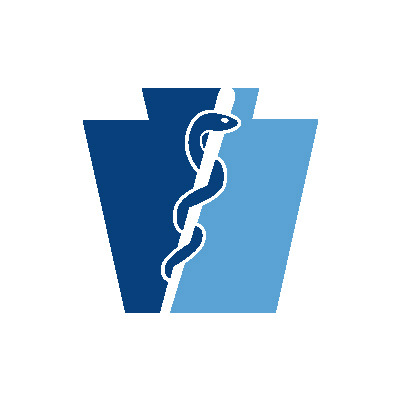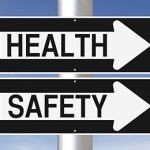The Wolf Administration highlighted the latest accomplishments of the Prescription Drug Monitoring Program (PDMP) and provided an update on prescribing and overdose trends up to October 2020.
Since the PDMP launched in 2016, there has been a 29.7% increase in the prescribing of buprenorphine. In addition, there has been a 58.6% reduction in the number of individuals receiving a high dosage of opioid medication, a 52.4% reduction in the number of individuals receiving a dangerous drug combination of opioids and benzodiazepines, and a 36.6% reduction in opioid prescribing overall.
In 2020, opioid overdose-related emergency department visits showed a slight increase (less than one percent) compared to 2019, despite a decrease in all cause emergency department visits during the COVID-19 pandemic response. There was an approximately 19 percent decrease in all cause emergency department visits in 2020 compared to 2019. Also, 20 counties showed statistically significant increases in any opioid overdose-related emergency department visits in 2020 compared to 2019.
Accidental and undetermined deaths related to any drug overdose were higher each month from January 2020 through July 2020 compared to the corresponding month in 2019. Since finalized death records for overdose deaths are often delayed by three to six months, 2020 counts are expected to increase further.
Winter months are typically a challenging time for many who struggle with the disease of addiction. With the need for people to isolate or quarantine, social distance and avoid gathering due to COVID-19, Pennsylvanians who have struggled with the disease of addiction may be at increased risk of relapsing this year.
“We are approaching one year of the ongoing COVID-19 pandemic, and many Pennsylvanians are struggling with the disease of addiction at the same time,” Deputy Secretary of Health Preparedness and Community Protection and Opioid Command Center Incident Commander Ray Barishansky said. “We know that a public health pandemic at the same time as the opioid epidemic has made for a challenging year. It is up to all of us to come alongside those who are struggling with the disease of addiction and to offer them our support. Treatment works, and recovery is possible.”
The Department of Drug and Alcohol Programs maintains a toll-free helpline that connects callers looking for treatment options for themselves or a loved one to resources in their community. You can reach the Get Help Now helpline at 1-800-662-HELP (4357). The helpline is available 24/7 – including on national holidays. An anonymous chat service offering the same information to individuals who may not be comfortable speaking on the phone is also available at www.ddap.pa.gov.
The Opioid Command Center, established in January 2018 when Gov. Wolf signed the first opioid disaster declaration, still meets weekly to discuss the opioid crisis. The command center is staffed by personnel from 17 state agencies and the Office of the Attorney General, spearheaded by the departments of Health and Drug and Alcohol Programs.
Work to address the opioid crisis focuses on three areas: prevention, rescue and treatment. Efforts over the past several years, working with state agencies, local, regional and federal officials, have resulted in significant action to address the opioid crisis:
- In September, DDAP announced the launch of Life Unites Us, an anti-stigma campaign, utilizing social media platforms to spread real-life stories of individuals and their family members battling substance use disorder, live and recorded webinars detailing tools and information necessary to effectively reduce stigma to more than 350 community-based organizations focused on SUD prevention, treatment, and recovery throughout Pennsylvania, and a web-based interactive data dashboard detailing the progress of the campaign.
- The Wolf Administration called on all Pennsylvanians to carry naloxone.
- Physician General signed an updated naloxone standing order permitting community-based organizations to provide naloxone by mail.
- The PDMP has reduced opioid prescriptions by 36.6 percent and has virtually eliminated doctor shopping.
- The number of people receiving high dosages of opioids (defined as greater than 90 morphine milligram equivalents per day) has dropped 58.6 percent since the PDMP launched in August 2016.
- The Opioid Data Dashboard and Data Dashboard 2.0 has provided public-facing data regarding prevention, rescue and treatment.
- 11 Pennsylvania Coordinated Medication Assisted Treatment (PacMAT) programs are serving as part of a hub-and-spoke model to provide evidence-based treatment to people where they live, with just under $26 million dedicated into the centers.
- More than 45 Centers of Excellence, administered by the Department of Human Services, provide coordinated, evidence-based treatment to people with an opioid use disorder covered by Medicaid. The COEs have treated more than 32,500 people since first launching in 2016.
- The waiver of birth certificate fees for those with opioid use disorder has helped more than 5,400 people, enabling easier entry into recovery programs.
- A standing order signed by Dr. Rachel Levine in 2018 allowed EMS to leave behind more than 2,400 doses of naloxone.
- Education has been provided to more than 9,500 prescribers through either online or face-to-face education.
- 882 drug take-back boxes help Pennsylvanians properly dispose of unwanted drugs, including 178,540 pounds of unwanted drugs in 2019. 2020 data is not yet available because of COVID.
- The Get Help Now Hotline received more than 44,000 calls, with more than half of all callers connected directly to a treatment provider.
- The state prison system has expanded their Medication Assisted Treatment (MAT) program, which is viewed as a model program for other states.
- A body scanner pilot project was successful in reducing overdoses and violent crime in a number of facilities. Body scanners are in place in more than 30 locations and are currently being expanded to additional facilities.
- Several agencies have worked together to collaborate on the seizure and destruction of illicit opioids across Pennsylvania.
- Education and training on opioids have been provided to schools. Future plans are in place to make opioid education a standard component of school-based training.
- The coordination with seven major commercial providers has expand access to naloxone and mental health care, while also working to make it more affordable.
- Naloxone has been made available to first responders through the Pennsylvania Commission on Crime and Delinquency since November 2017, with more than 72,000 kits made available and more than 16,241 overdose reversals reported through the program. More than 6,600 of those saves occurred in 2019.
- EMS have administered more than 47,000 doses of naloxone and more than 10,000 doses were made available to members of the public during the state’s naloxone distribution last year.




